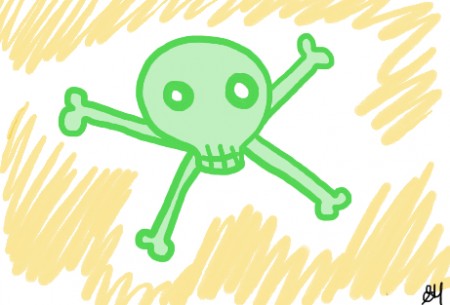Live hugging the tree, die hugging the tree.
So, you’re going to die. Someday. Probably. I mean, unless you are the (Dear) Supreme Leader Kim Jong-Il. In which case you’ll live in youthful glory forever.
And after spending your life avoiding flights, keeping the heat down, turning off the halogen bulbs, cycling to work, after you religiously keep taking that carbon footprint quiz online, there’s another question: you live green, so how do you die green?
Apparently the average cremation produces roughly 160kg of CO2. That’s four times more than your run of the mill burial.
A body might wait for a cremation in a refrigerator for up to 10 days. Again, another energy sink.
Well, apart from the whole cremation business, what about the embossed hardwood buried ten feet under?
According to one Australian government report, none of this is climate kosher.
Coffins made from recycled materials have less embodied energy than those made of hardwood and metal, and abstain from contributing to more deforestation. And being buried in a hand-dug grave, as opposed to a diesel-powered excavator hole will lessen your footprint, as bodies buried very deeply (sometimes more than 10 feet underground) are robbed of oxygen and produce methane as they decompose. And, I wouldn’t bother being buried in a vault either, as manufacturing a single vault can produce more than 130kg of CO2.
A simple hand dug burial has minimal carbon impact. And you can reduce your impact even further by planting a tree on your grave. A single tree has been reported to extract 37 tonnes of CO2 per year (PDF).
Any elaborate plans to be embalmed Pharaoh-style and then entombed in a concrete vault flanked by trumpeting angels may need to be revised.

Green burial is now part of the overall environmental movement, though the emissions associated with one’s manner of bodily disposal are almost certainly a tiny fraction of those one generates in life. That is, unless one takes the Pharaohic temple route.
Personally, my biggest objection to traditional forms of burial and cremation is how the perpetuate the view of human beings as separate from nature. I worked hard to accumulate all the nutrients in my body, and I don’t think they should go to waste in an incinerator or concrete vault. I would be happier with them finding their way quickly back into an ecosystem – ideally the West Coast forests.
Being eaten by a tiger is also an idea that is not entirely without appeal.
I would therefore think you’d be a fan of sky burial.
Whether “traditional” burial indicates a false dualism between humanity and everything else depends on which tradition you’re referring to.
Otherwise, nice post.